21 Big Eared Animals: Nature’s Acoustic Wonders

Big eared animals serve essential functions in the wild, such as communication and balance. Their world is both fascinating and vast. The enigmatic fennec fox, for example, uses its prominent ears to disperse heat in the desert in addition to regulating body temperature.
We will explore the interesting world of animals with large ears in this research, exploring the numerous functions these wonderful adaptations serve and getting insight into the fascinating existence of these extraordinary organisms.
From big lips animals to those with big eared and big foreheads, the animal kingdom showcases a remarkable array of adaptations that contribute to their diverse ecological niches and behaviors.
Big Eared Animals
Contents
- 1 Big Eared Animals
- 2 List of Big Ears Animals
- 2.1 Bat-eared Fox
- 2.2 Basset Hound
- 2.3 Caracal
- 2.4 Brown Rat or Norway Rat
- 2.5 Fennec Fox
- 2.6 California Hare
- 2.7 Anglo Nubian Goat
- 2.8 Serval
- 2.9 African Elephant
- 2.10 Mule Deer
- 2.11 Aardvark
- 2.12 Aye-Aye
- 2.13 Greater Kudu
- 2.14 European Hare
- 2.15 Red Kangaroo
- 2.16 Gerenuk
- 2.17 Patagonian Fox
- 2.18 Desert Hedgehog
- 2.19 Long-Eared Owl
- 2.20 Jerboa
- 2.21 Koalas
- 3 Challenges of Being a Big Eared Animals
- 4 FAQs
Big-eared animals, ranging from the iconic long-eared owl to the elusive big-eared opossum, exhibit remarkable adaptations in their auditory abilities. These creatures have evolved large ears as a survival strategy.
For instance, long-eared owls use their oversized ear tufts not just for visual camouflage but also to enhance their hearing, enabling them to locate prey with precision in low-light conditions.
Similarly, the big eared hopping mouse relies on its prominent ears to detect predators and communicate with its kind. These examples showcase the diverse range of big eared creatures in the animal kingdom, each employing its unique auditory advantages for survival.
List of Big Ears Animals
- Bat-eared Fox
- Bassett Hound
- Caracal
- Brown Rat or Norway Rat
- Fennec fox
- California Hare
- Anglo-Nubian Goat
- Serval
- African Elephant
- Mule Deer
- Aardvark
- Aye-Aye
- Greater Kudu
- European Hare
- Red Kangaroo
- Gerenuk
- Patagonian Fox
- Long-Eared Owl
- Koalas
- Desert Hedgehog
- Jerboa
Bat-eared Fox

| Attribute | Information |
| Scientific Name | Otocyon megalotis |
| Size | 18 – 26 inches |
| Weight | 3 – 5.5 pounds |
| Group | Mammal |
| Diet | Insects, mainly termites |
| Location | Arid regions of Africa |
Africa’s deserts are home to the little carnivore known as the Bat-Eared Fox. Their five-inch-long, oversized ears are an essential part of managing their body temperature. But there’s more! Insects, which make up a major component of their food, may be heard even at deficient noise levels according to the acute hearing of these ears.
They hunt for termites and other prey by listening for noises of digging and movement underneath using their powerful auditory features.
Basset Hound

| Attribute | Information |
| Scientific Name | Canis lupus familiaris |
| Size | 12 – 15 inches at shoulder |
| Weight | 40 – 65 pounds |
| Group | Dog |
| Diet | Commercial dog food, meat |
| Location | Worldwide |
The large, floppy ears of Basset Hounds, a specific breed of dog, may exceed up to one-third of all of their length. These ears help them become exceptional scent hounds by moving smells from the ground up toward their highly reactive noses.
They can identify game thanks to their keen sense of smell, making them an essential breed for hunters and search-and-rescue duties.
Caracal

| Attribute | Information |
| Scientific Name | Caracal caracal |
| Size | 16 – 24 inches at the shoulder |
| Weight | 24 – 40 pounds |
| Group | Mammal |
| Diet | Small mammals, birds |
| Location | Africa, Asia |
The Caracal is a medium-sized wild cat found in various parts of Africa and Asia. They possess tufted ears that enhance their striking appearance. These tufts, along with their large ears, aid in their exceptional hearing.
Caracals are primarily solitary hunters, and their keen auditory senses help them locate prey, such as birds and small mammals, in dense vegetation.
Brown Rat or Norway Rat

| Attribute | Information |
| Scientific Name | Rattus norvegicus |
| Size | 7 – 10 inches |
| Weight | 6 – 12 ounces |
| Group | Rodent |
| Diet | Omnivorous |
| Location | Worldwide |
While Brown Ratsis is a Big eared animals, also known as Norway Rats, may not be immediately associated with large ears, they have highly developed hearing. Their ears are adapted to detect a wide range of frequencies, allowing them to perceive both high-pitched and low-pitched sounds.
This acute sense of hearing is advantageous for avoiding predators and navigating urban environments, where they are often considered pests.
Fennec Fox

| Attribute | Information |
| Scientific Name | Vulpes zerda |
| Size | 9 – 16 inches |
| Weight | 2 – 3.5 pounds |
| Group | Mammal |
| Diet | Insects, small mammals |
| Location | North Africa |
Fennec Foxes are small carnivores native to North Africa, renowned for their oversized ears that can be as long as 6 inches. These large ears are not only excellent for dissipating heat in the desert but also play a crucial role in their survival.
Fennec Foxes primarily feed on insects and small rodents, and their acute hearing helps them locate prey by detecting subtle sounds, such as the rustling of insects beneath the sand.
California Hare
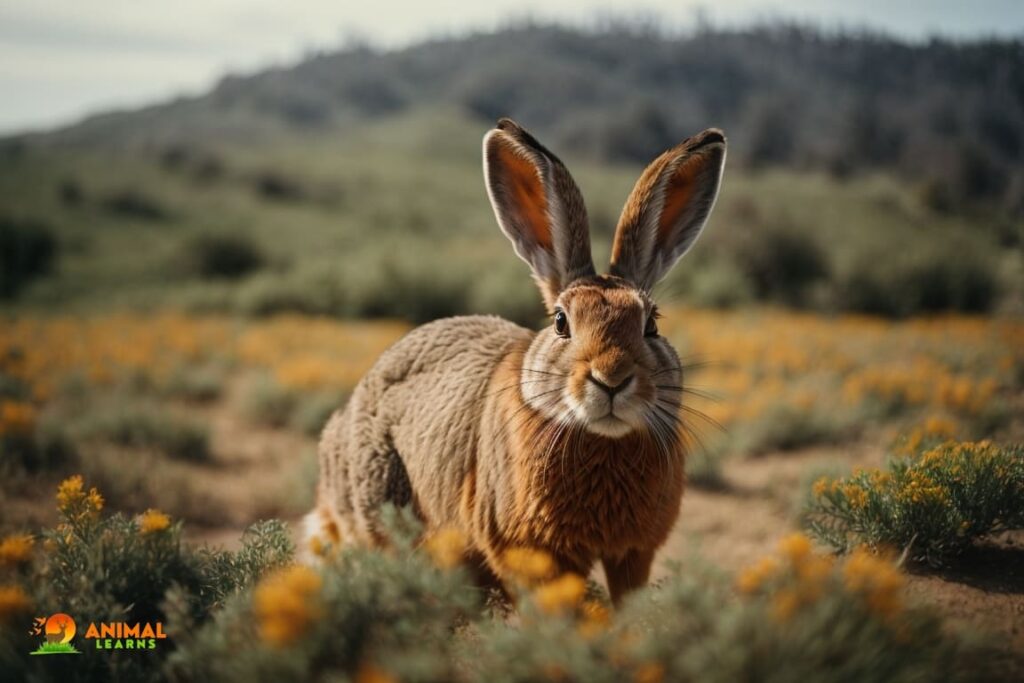
| Attribute | Information |
| Scientific Name | Lepus californicus |
| Size | 18 – 24 inches |
| Weight | 3 – 7 pounds |
| Group | Mammal |
| Diet | Herbivore |
| Location | Western North America |
Big eared animals like the California Hare, also known as the Black-tailed Jackrabbit, is a hare species known for its long ears that can measure up to 7 inches in length. These large ears serve to regulate their body temperature in the arid environments they inhabit.
In addition to thermoregulation, they also have keen hearing, which aids them in detecting approaching predators while they graze on vegetation and navigate their desert habitats.
Anglo Nubian Goat
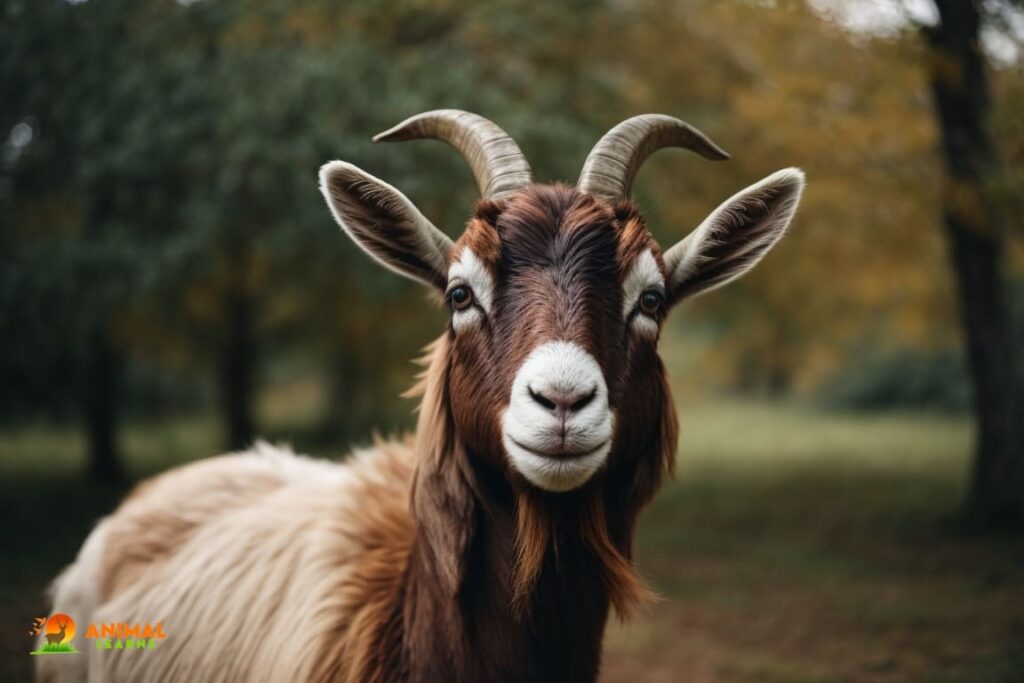
| Attribute | Information |
| Scientific Name | Capra aegagrus hircus |
| Size | 23 – 31 inches at the shoulder |
| Weight | 135 – 175 pounds |
| Group | Mammal |
| Diet | Herbivore |
| Location | Worldwide |
The Anglo-Nubian Goat is a domesticated breed favored for its milk production. These goats possess long, pendulous ears that provide them with excellent hearing. The large ears are thought to help dissipate heat in hot climates.
Nubian goats are known for their friendly disposition and adaptability to various climates, making them valuable livestock in many parts of the world.
Serval
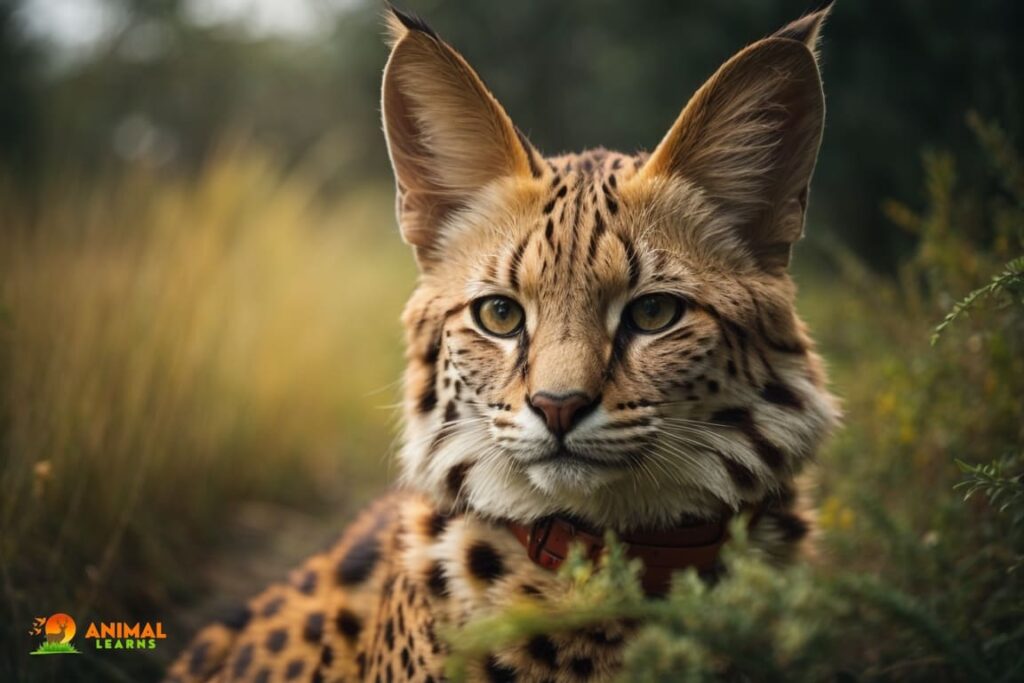
| Attribute | Information |
| Scientific Name | Leptailurus serval |
| Size | 20 – 26 inches at the shoulder |
| Weight | 20 – 40 pounds |
| Group | Mammal |
| Diet | Small mammals, birds |
| Location | Africa |
Servals are medium-sized wild cats native to Africa, characterized by their large, pointed ears that enhance their striking appearance. These ears are not only an iconic feature but also serve a functional purpose.
Servals have incredibly acute hearing, which allows them to detect the slightest rustles and movements of small mammals and birds hiding in tall grasses. This keen auditory sense aids in their hunting success as they pounce on prey with precision in their grassland habitats.
African Elephant

| Attribute | Information |
| Scientific Name | Loxodonta africana (or Loxodonta cyclotis for forest elephants) |
| Size | Herbivores, consuming various vegetation |
| Weight | Up to 6 tons for males |
| Group | Mammal |
| Diet | Herbivores consume various vegetation |
| Location | Africa |
The African Elephant is the largest terrestrial mammal on Earth, inhabiting a range of ecosystems across Africa, from savannas to forests. These majestic creatures exhibit iconic, large ears that are not only distinctive but also serve crucial functions.
Their massive ears are filled with blood vessels that help regulate body temperature by dissipating excess heat. In addition to this thermoregulatory function, their ears play a role in communication, enabling them to convey a variety of emotions and sounds to their herd members over long distances.
Mule Deer

| Attribute | Information |
| Scientific Name | Odocoileus hemionus |
| Size | 3 – 3.5 feet (at shoulder) |
| Weight | 130 – 280 pounds |
| Group | Mammal |
| Diet | Herbivore, feeding on shrubs, forbs, and grasses |
| Location | North America |
Mule Deer are native to North America and are named for their large, mule-like ears that aid in detecting predators and other potential threats. These big ears are an adaptation to their environment.
Mule Deer are herbivores, with a varied diet that includes shrubs, forbs, and grasses. Their agility and ability to jump considerable heights make them well-suited to navigating the rugged terrain of their habitats, which can range from forests to arid deserts.
Aardvark
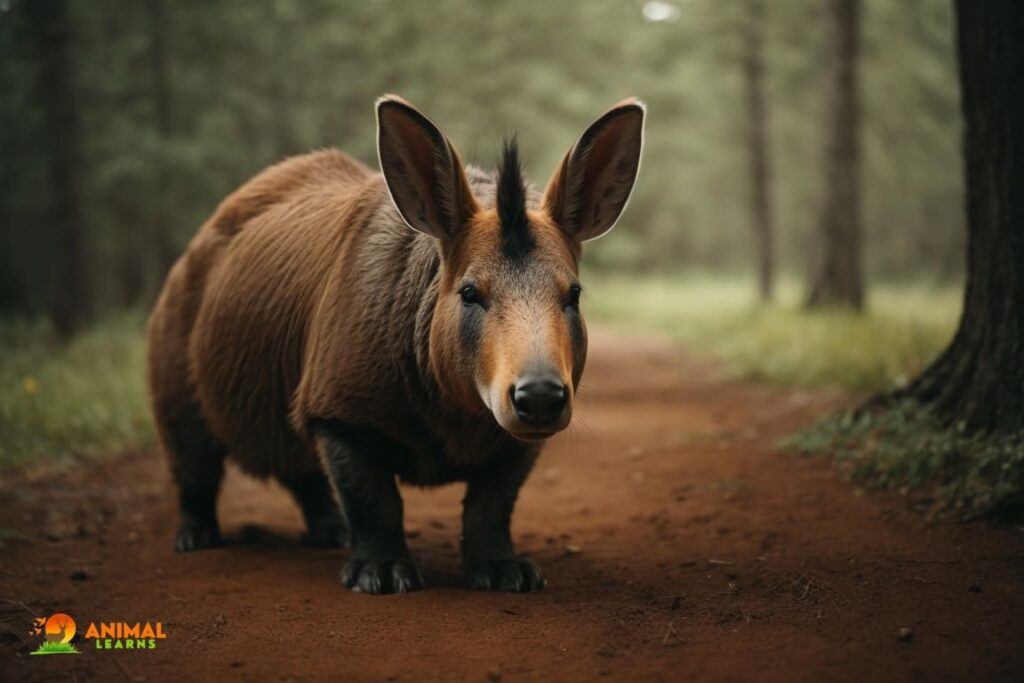
| Attribute | Information |
| Scientific Name | Orycteropus afer |
| Size | 18 – 24 inches (at shoulder) |
| Weight | 88 – 143 pounds |
| Group | Mammal |
| Diet | Insectivore, primarily eating ants and termites |
| Location | Africa |
Big eared animals like the Aardvark (Orycteropus afer) is a nocturnal mammals native to Africa. Despite their relatively large ears, Aardvarks rely primarily on their keen sense of smell to locate prey. They are insectivores, feeding primarily on ants and termites.
Their large ears help regulate body temperature, ensuring they don’t overheat while foraging for food in hot African nights. With their long, sticky tongues, they extract insects from underground tunnels and mounds.
Aye-Aye
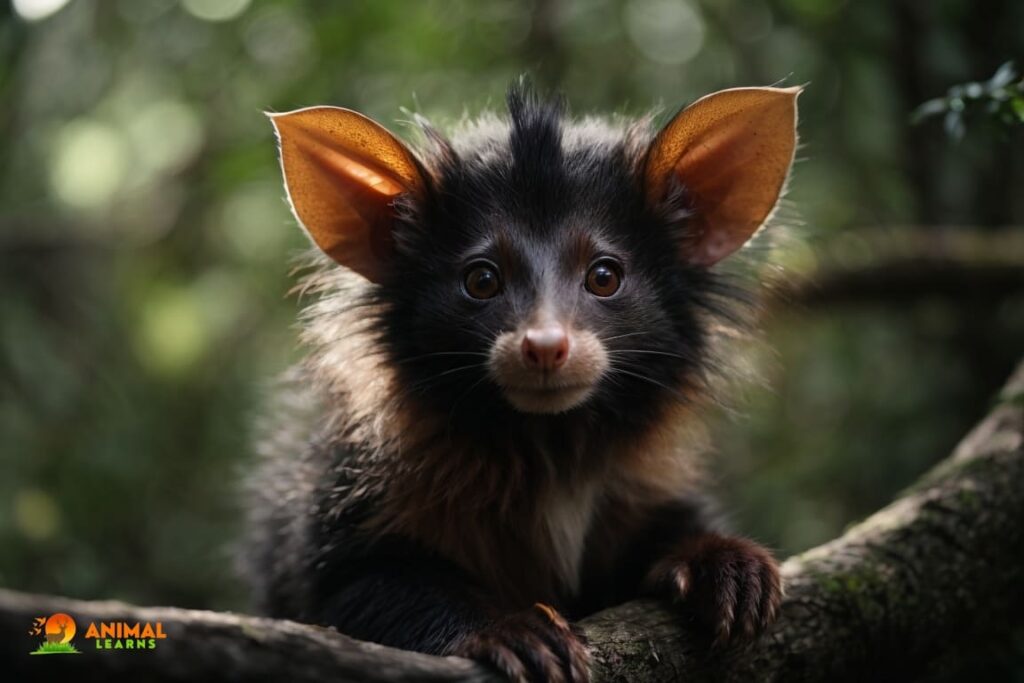
| Attribute | Information |
| Scientific Name | Daubentonia madagascariensis |
| Size | 14 – 17 inches (body length) |
| Weight | 2 – 4 pounds |
| Group | Mammal |
| Diet | Omnivore, primarily feeding on insect larvae |
| Location | Madagascar |
Big eared animals like the Aye-Aye (Daubentonia madagascariensis) is a unique primates found only in Madagascar. It is known for its large, bat-like ears and unusual fingers. These large ears aid the Aye-Aye in detecting larvae hidden within tree bark.
The Aye-Aye’s specialized elongated middle finger is used to tap on the bark, and its ears help it listen for the echoes produced by moving insect larvae. This unique hunting strategy sets the Aye-Aye apart in the animal kingdom.
Greater Kudu

| Attribute | Information |
| Scientific Name | Tragelaphus strepsiceros |
| Size | 3 – 3.5 feet (at shoulder) for males |
| Weight | 420 – 600 pounds for males |
| Group | Mammal |
| Diet | Herbivore, browsing on leaves, grasses, and shrubs |
| Location | Africa |
The Greater Kudu (Tragelaphus strepsiceros) is a striking antelope species found in Africa. It boasts impressive, spiral-twisted horns and large, expressive ears. These ears, along with their keen sense of smell and excellent vision, help Greater Kudus detect predators in their wooded habitats.
Greater Kudus are herbivores, primarily browsing on leaves, grasses, and shrubs, and they are known for their graceful and agile movements.
European Hare

| Attribute | Information |
| Scientific Name | Lepus europaeus |
| Size | 16 – 20 inches (body length) |
| Weight | 4 – 9 pounds |
| Group | Mammal |
| Diet | Herbivore, primarily consuming grasses and herbs |
| Location | Europe, Asia, and parts of North Africa |
European Hares (Lepus europaeus) are recognized for their large ears that contribute to their acute sense of hearing and heightened awareness of their surroundings. These solitary herbivores are swift runners, capable of reaching speeds of up to 45 miles per hour to evade predators.
European Hares primarily feed on various plant materials such as grasses, herbs, and woody vegetation. Their keen senses, including their large ears, help them survive in diverse habitats, from farmlands to grasslands.
Red Kangaroo
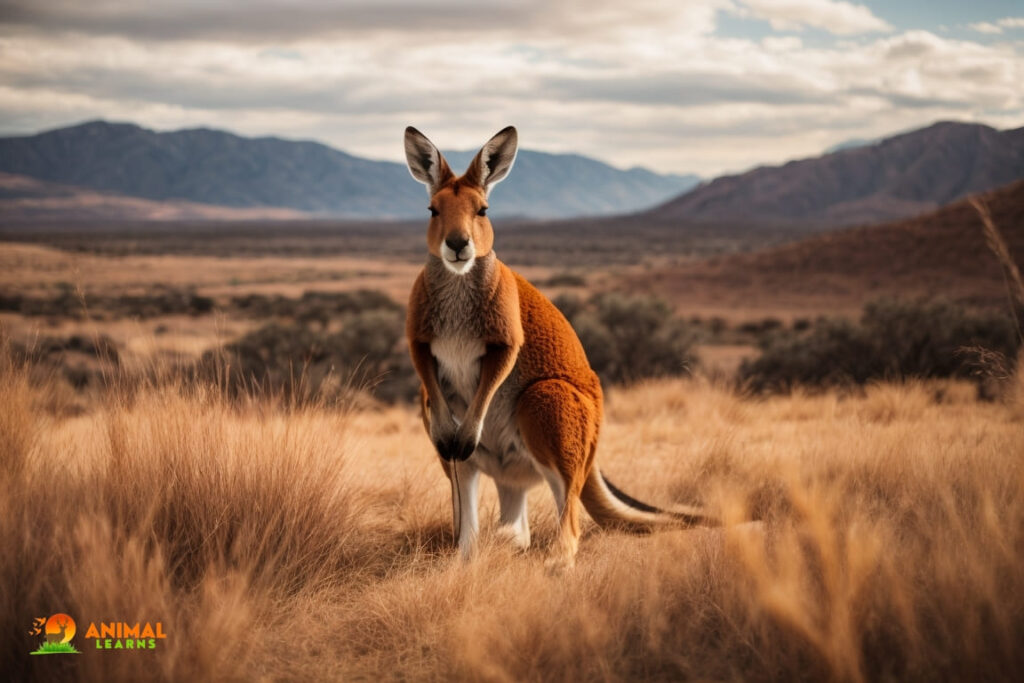
| Attribute | Information |
| Scientific Name | Macropus rufus |
| Size | Up to 8 feet (including tail) |
| Weight | 110 – 200 pounds for males |
| Group | Marsupial |
| Diet | Herbivore, grazing on grasses and shrubs |
| Location | Australia |
Big eared animals like the Red Kangaroo (Macropus rufus), native to Australia, exhibit prominent ears that assist them in detecting distant sounds and potential dangers across the vast Australian outback. These marsupials are the largest of all kangaroo species, with males reaching impressive sizes.
Red Kangaroos are herbivores, primarily grazing on grasses and shrubs. They are known for their powerful hind legs and long, muscular tail, which aid in hopping, balance, and stability.
Gerenuk

| Attribute | Information |
| Scientific Name | Litocranius walleri |
| Size | 80 – 105 cm (height) |
| Weight | 28 – 52 kg |
| Group | Mammal |
| Diet | Leaves, buds, and flowers |
| Location | East Africa |
The Gerenuk is a unique antelope species native to East Africa. It is known for its long, slender neck and large, expressive ears that allow it to reach high branches for browsing on leaves.
Gerenuks are one of the few antelopes primarily specialized in eating foliage. They are remarkably agile and can stand on their hind legs to reach even more elevated food sources, demonstrating their distinctive feeding behavior.
Patagonian Fox
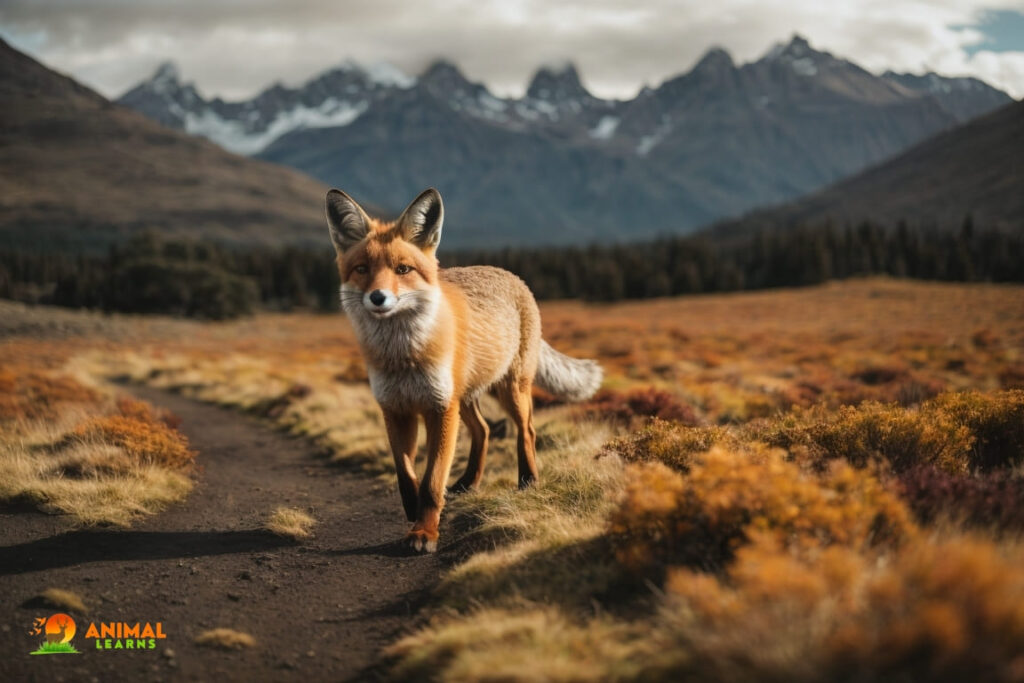
| Attribute | Information |
| Scientific Name | Lycalopex griseus |
| Size | 45 – 75 cm (length) |
| Weight | 2.6 – 5.6 kg |
| Group | Mammal |
| Diet | Omnivorous |
| Location | Southern South America |
The Patagonian Fox, also known as the South American Gray Fox, inhabits the southern regions of South America. While its ears aren’t exceptionally large, they play a crucial role in its survival by providing keen auditory senses for detecting prey movements, such as rodents and birds.
These foxes are opportunistic omnivores, adapting their diet to the season and available food sources.
Desert Hedgehog

| Scientific Name | Paraechinus aethiopicus |
| Size | Small, around 6-8 inches |
| Weight | Approximately 5-7 ounces |
| Habitat | Desert regions |
| Diet | Omnivorous |
| Activity Pattern | Nocturnal |
| Special Feature | Large ears for hearing |
Big eared animals like Desert hedgehogs, scientifically known as Paraechinus aethiopicus, are small mammals found in arid regions of North Africa and the Middle East. They are notable for their distinctive big ears, which serve them well in their desert habitat.
These large ears help them detect faint sounds, including potential predators or prey, in the vast and often silent desert landscapes. Desert hedgehogs are omnivorous, feeding on a diet that includes insects, plants, and occasionally small vertebrates.
Long-Eared Owl
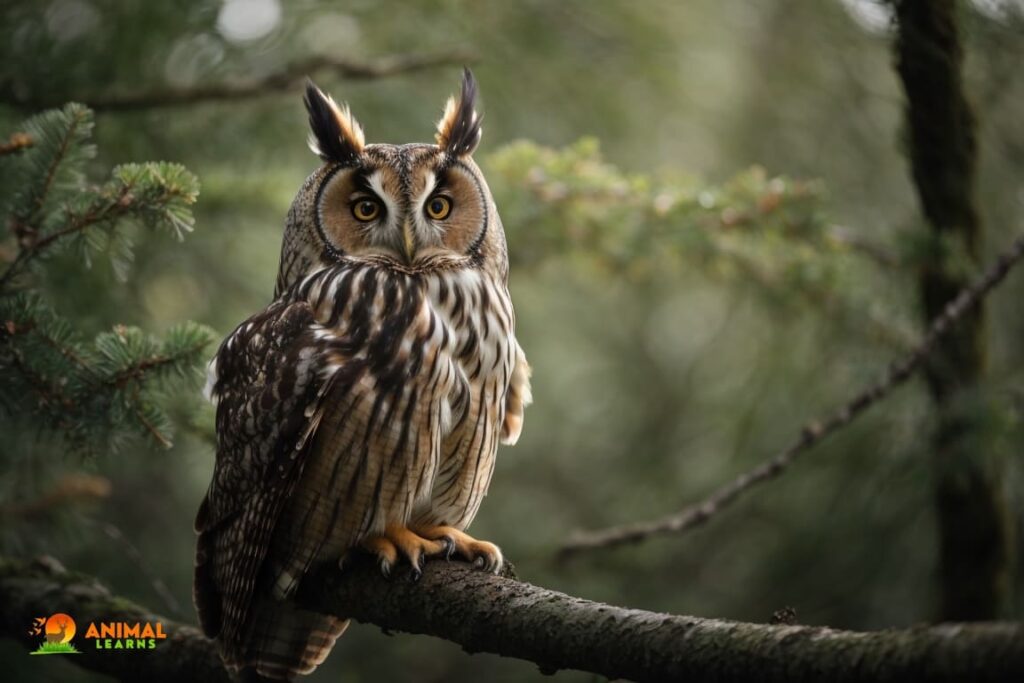
| Attribute | Information |
| Scientific Name | Asio otus |
| Size | 35 – 40 cm (length) |
| Weight | 280 – 450 grams |
| Group | Bird |
| Diet | Small mammals and birds |
| Location | Worldwide |
The Long-Eared Owl is a bird of prey with distinctive tufts of feathers resembling “ears” on its head. These tufts are not ears but serve as camouflage and communication tools.
Long-eared owls have exceptional hearing due to the placement of their actual ears, which are asymmetrically located on their skull. This adaptation aids them in locating and capturing small mammals and birds in low-light conditions.
Jerboa

| Scientific Name | Dipodidae (family) |
| Size | Small, varies by species (typically 2-6 inches) |
| Weight | Typically less than 4 ounces |
| Habitat | Arid and desert regions of Asia and Northern Africa |
| Diet | Herbivorous, primarily seeds and vegetation |
| Activity Pattern | Nocturnal, primarily active at night |
| Special Feature | Long hind legs for hopping, large ears for hearing and thermoregulation |
Big eared animals like jerboas are small, hopping rodents belonging to the family Dipodidae. They are known for their strikingly long hind legs and equally long tails, making them exceptional jumpers and agile runners. These creatures are primarily found in arid and desert regions of Asia and Northern Africa.
Jerboas possess big ears that serve multiple purposes, including excellent hearing to detect approaching predators and communicate with other jerboas using vocalizations. Jerboas are well-adapted to their environment, using their large ears for thermoregulation by dissipating excess heat.
Koalas
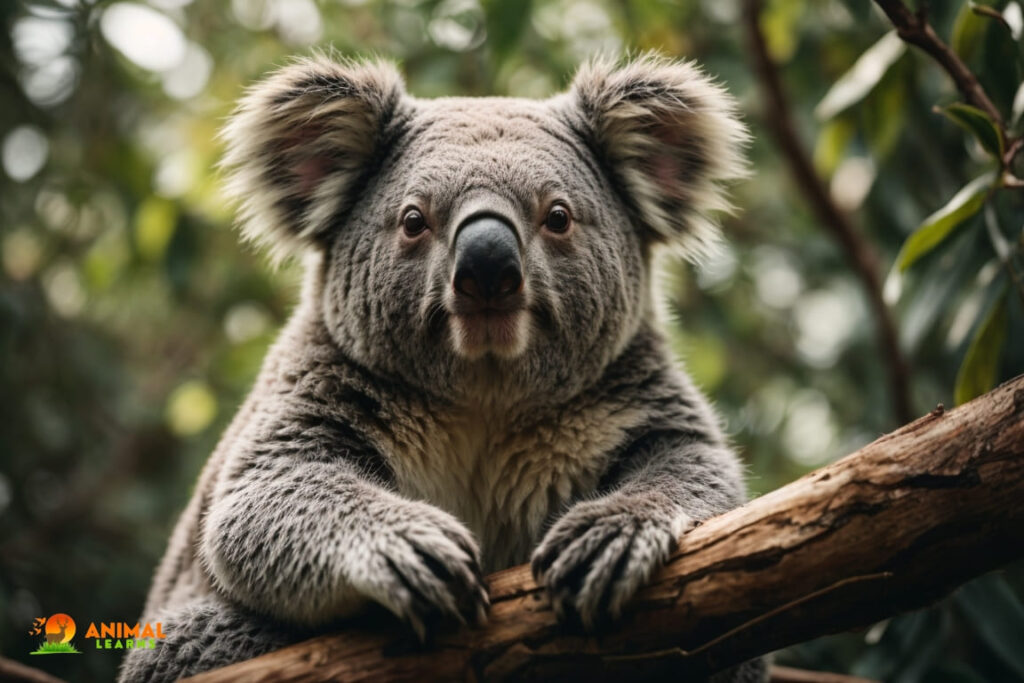
| Attribute | Information |
| Scientific Name | Phascolarctos cinereus |
| Size | 60 – 85 cm (length) |
| Weight | 4 – 15 kg |
| Group | Marsupial |
| Diet | Eucalyptus leaves |
| Location | Eastern and Southern Australia |
While not typically associated with big ears, Koala have relatively large, fluffy ears that contribute to their adorable appearance. These marsupials are primarily arboreal and use their keen hearing to detect approaching predators or other Koalas in their vicinity.
Koalas are herbivores, feeding exclusively on eucalyptus leaves, which provide them with their dietary needs while perched in the trees of Australia’s eucalyptus forests.
Challenges of Being a Big Eared Animals
While big ears provide significant advantages, they also come with challenges. Animals like the big-eared woodrat and big-eared sports announcer often face difficulties in terms of overheating, as their large ears can dissipate excess heat.
Additionally, in today’s world, some big-eared animals are becoming rarer due to various factors like habitat loss and changing ecological dynamics, as evidenced by the decline of big-eared bats.
Understanding the significance of big eared animals prominent ears helps shed light on their remarkable adaptations and the challenges they face in a rapidly changing environment.
FAQs
Why do some animals have big ears?
Big ears in animals often serve multiple purposes, including enhancing their hearing abilities, regulating body temperature, and even communication. These adaptations help them survive in their specific habitats.
Which animal has the biggest ears in the world?
The African elephant holds the record for having the biggest ears among land animals. Their large ears help regulate their body temperature and can also be used for communication.
Do big ears help animals in the desert?
Yes, big ears are advantageous for desert-dwelling animals like the fennec fox. Their large ears dissipate heat and aid in cooling, allowing them to thrive in hot environments.
Are all big-eared animals nocturnal?
No, not all big-eared animals are nocturnal. While some, like the long-eared owl, are primarily active at night, others, such as the kangaroo, are diurnal and active during the day.
Why are big-eared animals becoming rare in some regions?
Big-eared animals face threats such as habitat loss, climate change, and poaching. These factors contribute to their declining populations in certain areas, making conservation efforts crucial for their survival.












